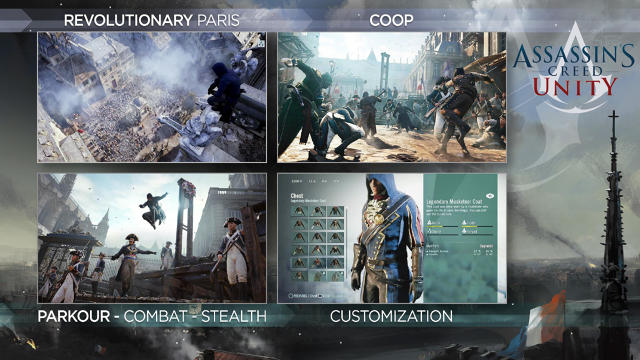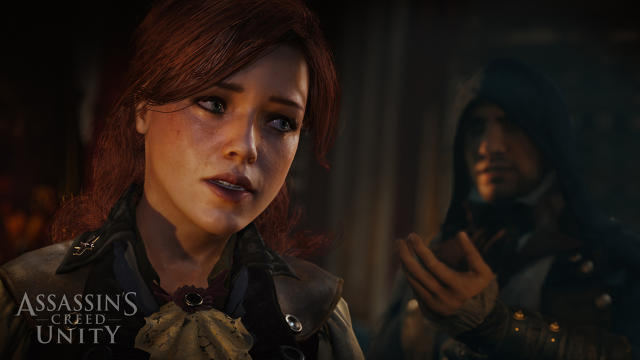Co.LABS
Editor: Noah Robischon November 12, 2014


Ubisoft’s approach to encouraging collaboration between studios was put to the test over a third of the way into the flagship game’s four-year development process. The Toronto studio, where Phord-Toy works, had over 100 people working on Assassin’s Creed: Unity—all of whom they needed when they received a new assignment. Ubisoft Toronto, responsible for building half of 1789 Paris at full-scale from the Left Bank onward, was tasked with enabling four-player cooperative gameplay and developing that content for the game, a challenge that arose from fan demand. The problem was that the existing narrative vision defined by the lead Montreal studio would be broken by Toronto’s multi-player, or “Brotherhood” mode—in which every player was engaged as the game’s protagonist Arno Dorian. The challenge translated into two goals: spur players to work co-operatively, and resolve the “narrative dissonance” caused by four versions of the main character in the same place, at the same time. Ubisoft Toronto, in consultation with the Montreal studio, addressed these challenges by introducing each Brotherhood mission with a cinematic segment, akin to a miniature movie trailer, narrated by a new female character named The Enabler. The cinematic segments transition the game from action to a scripted segment, introduces the content, frames the history, presents a compelling reason for players to pursue a task together, sets objectives, and transitions back into gameplay. (Historian Laurent Turcot of the University of Québec, Trois-Rivières, guided the development of historical content.)

However, gamers tend to hate cinematic sequences because they can’t participate in the events unfolding on their screens. To minimize that pain, Ubisoft Toronto set a one-minute time limit for Brotherhood cinematics. It was difficult, but Phord-Toy believes that the solution worked, with an added benefit: “It’s a sneaky way of us getting a history lesson to our fans.” The solution, which would not have been possible without interdisciplinary collaboration between the Toronto and Montreal teams (as well as some of the other studios), is a prime example of Ubisoft’s process at work, according to Phord-Toy. “There are multiple examples—maybe hundreds—where ideas have been shared between studios,” she added. With its operational model proven at such a large scale, Phord-Toy thinks it may may be beneficial in other industries, particularly at the intersection of complex systems and creative content.

(149)